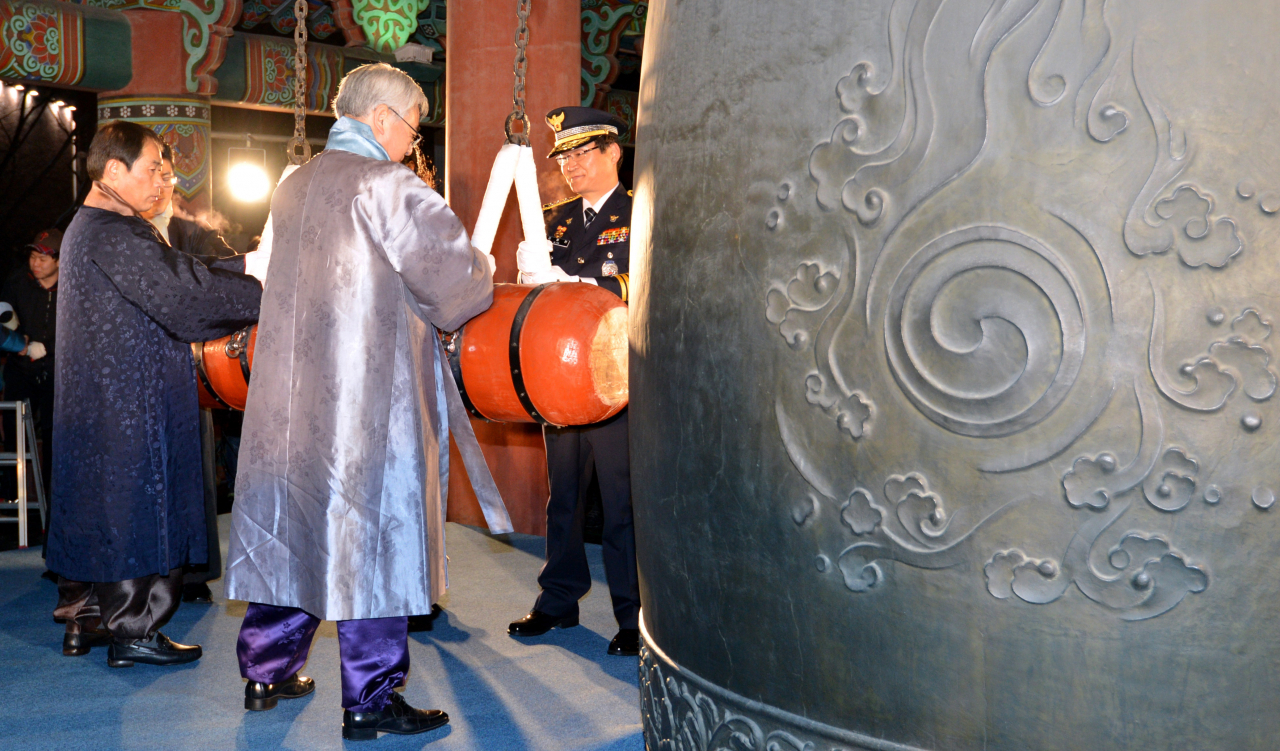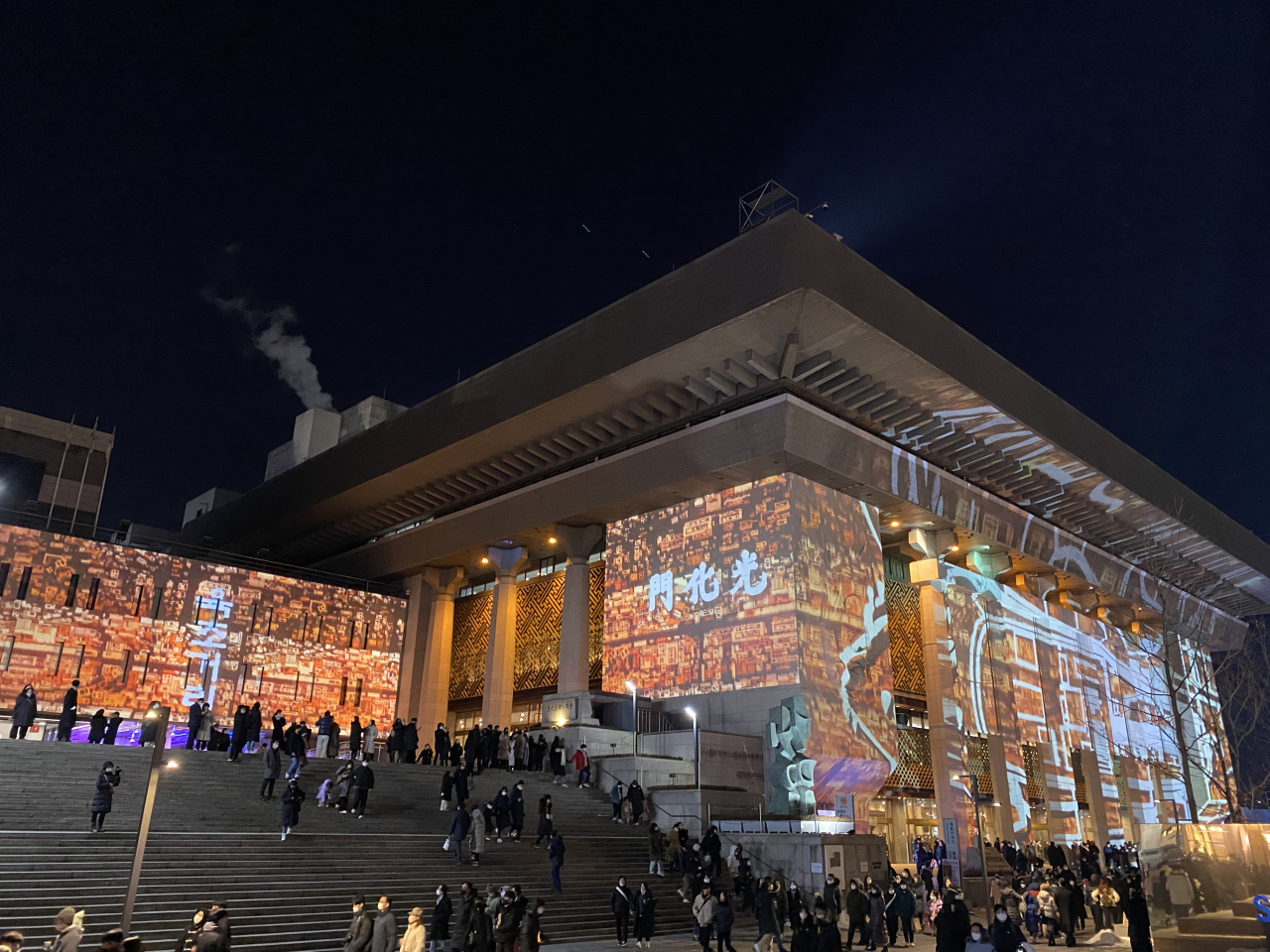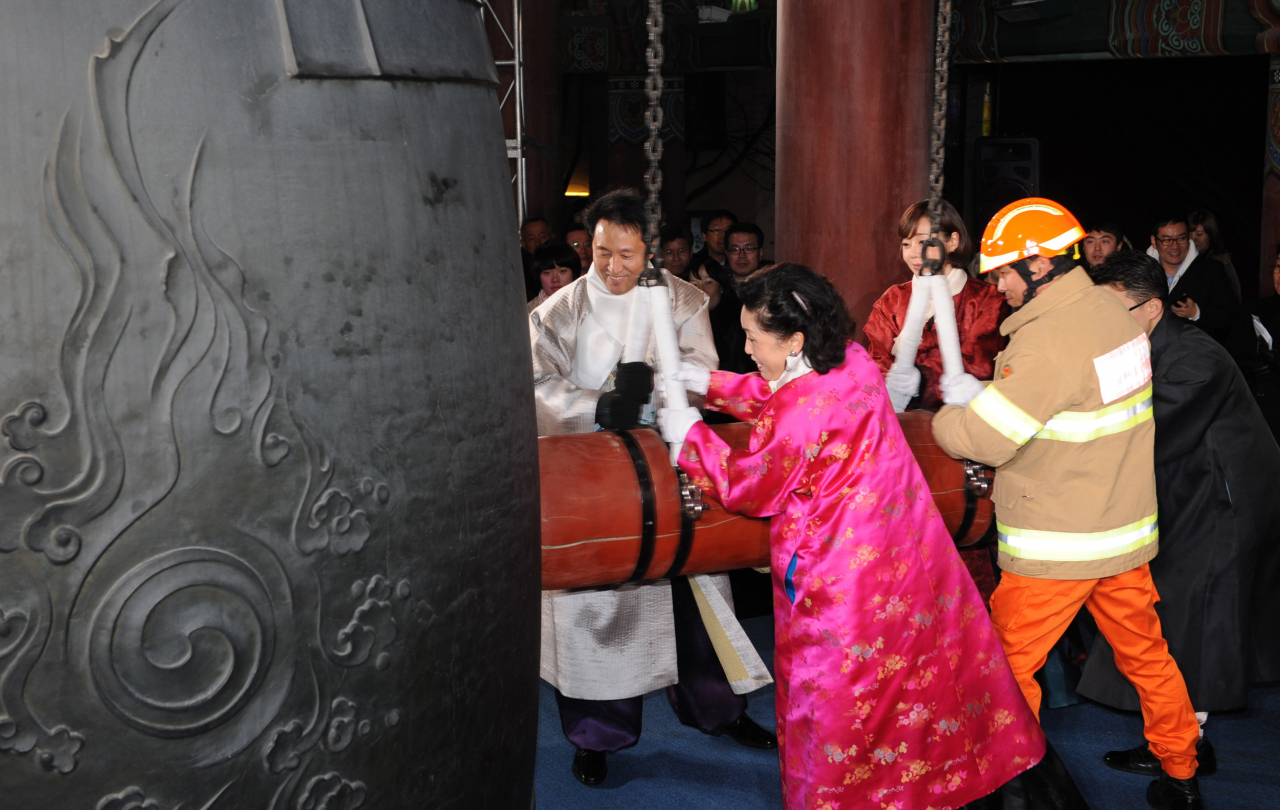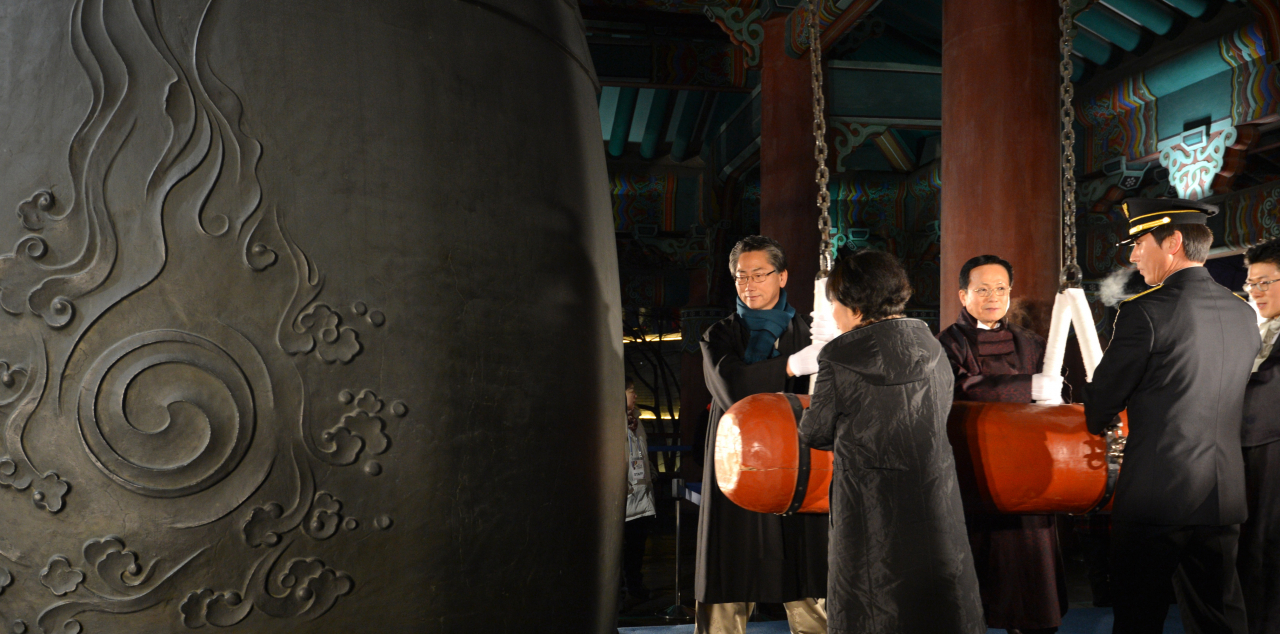[Newsmaker] For whom the Bosingak bell tolls: Koreans celebrate return of New Year's ceremony
Similar to the ball drop in New York, Koreans ring in the new year with 33 bell tolls in central Seoul
By Yoon Min-sikPublished : Dec. 27, 2022 - 13:44
The New Year’s bell-ringing ceremony at Bosingak will be back this Saturday as an offline event for the first time since 2019. Coronavirus restrictions had forced the ceremony to be held exclusively online for the past two years.
Just as Americans gather to see the ball drop at New York City's Times Square at midnight, South Koreans flock to the Jongno-gu area to see the old bronze Bosingak bell being rung 33 times, a time-honored tradition with religious roots that signifies “cleansing the darkness of the old year" to welcome the new one.
Why 33 times? History has the answer
While the modern version of the New Year’s bell-ringing ceremony started after the 1950-53 Korean War, its history actually dates back centuries to the early years of the Joseon era (1392-1910).
The Bosingak bell has been rung since the rule of King Taejong of the Joseon Kingdom (1392-1897) -- from the year 1396, to be exact. The pavilion was then named Jonggak, the namesake for the subway station on Line No.1 that exists today. Authorities rang the bell twice a day at 4 a.m. and 10 p.m. to announce the lifting and enforcing of the state curfew.

While the Joseon Kingdom is known for being a Confucian society, the influence of its predecessor, the Goryeo Kingdom -- whose state religion was Buddhism -- was found particularly in the early phases of the new kingdom, including the bell-ringing ceremony. The curfew-lifting bell rang 33 times, which was called “Pa-ru.” It held a Buddhist meaning of praying for the well-being and peace of the people and the country to the 33 heavens ruled by Jeseokcheon, the Korean name for the Buddhist deity Sakra.
In 1895, King Gojong changed the name of the pavilion to Bosingak and had the bells rung at noon and midnight.
When Japan occupied the Korean Peninsula from 1910 to 1945, the Japanese colonial government held a live broadcast of the bell-ringing ceremony in 1929. However, the current format was established on the last day of 1953, mere months after the end of the Korean War. Adopted from the Buddhist tradition of ringing a bell for 33 days, the current format of ringing the bell 33 times has become a beloved tradition for South Koreans.
Along with the bell-ringing ceremony, visiting spots across the country to see the sunrise on New Year’s Day is another popular tradition for locals. Gathering to watch New Year’s sunrises, which were put on temporarily hold during the pandemic era, also resumed at various regions around the country including the southeastern city of Ulju-gun in Ulsan; Haeundae Beach in the southernmost city of Busan; Jeongdongjin-ri in Gangneung, Gangwon Province; and South Korea’s tallest mountain of Hallasan in Jeju.
Bell-ringing this year
The city of Seoul announced Tuesday that the bell-ringing at Bosingak will be televised via YTN, and also livestreamed at Gwanghwamun Plaza and Dongdaemun Design Plaza in Jung-gu, central Seoul in a bid to prevent overcrowding at the pavilion. Light shows "Seoul Light Gwanghwa" and "Seoul Light DDP" will be held at the two venues at around midnight to add more color to the New Year's event.

Bosingak will likely be flooded with people on Saturday evening, with the Seoul Metropolitan Government projecting more than 100,000 people gathering for the ceremony.
The huge crowd is nothing unusual for locals, but what is different this year is the city’s boosted safety measures. For 2020 and 2021, the public was only allowed to access the bell-ringing ceremony online due to pandemic-related public health concerns.

The city government plans to deploy a total of 957 personnel related to safety in cooperation with the Jongno-gu district office, Seoul Metro and the Seoul Facilities Corp.. This marks an increase of over 60 percent from the 597 personnel deployed in 2019, the last time New Year’s bell-ringing ceremony was held in-person. Subway trains will also skip Jonggak Station on Line No.1 where the bell pavilion is located from between 11 p.m. Saturday to 1 a.m. Sunday to prevent overcrowding.
Public transportation services will extend operations until 2 a.m., while traffic control on the roads surrounding Bosingak will be implemented from 9 p.m. Saturday to 1 a.m. the next day. The authorities will monitor crowd flow via CCTV in the area for potential dangers.
Authorities are taking extra care to avoid situations like the Itaewon tragedy in October. The first Halloween festivities since the outdoor mask mandate was fully lifted led to a deadly crowd crush that left 158 dead.
Such caution was apparent during the holiday season in December, when police officers and city officials were dispatched on busy streets like the shopping district of Myeong-dong to maintain order and prevent overcrowding.
With an eye on safety, some other municipal governments have also announced the return of bell-ringing ceremonies. The cities of Changwon and Jinju in South Gyeongsang Province announced that they would host their own bell-ringing ceremonies to ring in the new year on Dec. 31.





![[Herald Interview] 'Amid aging population, Korea to invite more young professionals from overseas'](http://res.heraldm.com/phpwas/restmb_idxmake.php?idx=644&simg=/content/image/2024/04/24/20240424050844_0.jpg&u=20240424200058)













![[KH Explains] Korean shipbuilding stocks rally: Real growth or bubble?](http://res.heraldm.com/phpwas/restmb_idxmake.php?idx=652&simg=/content/image/2024/04/25/20240425050656_0.jpg&u=)

